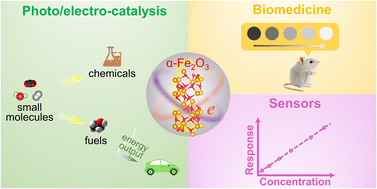Advanced hematite nanomaterials for newly emerging applications
Abstract
Because of the combined merits of rich physicochemical properties, abundance, low toxicity, etc., hematite (α-Fe2O3), one of the most chemically stable compounds based on the transition metal element iron, is endowed with multifunctionalities and has steadily been a research hotspot for decades. Very recently, advanced α-Fe2O3 materials have also been developed for applications in some cutting-edge fields. To reflect this trend, the latest progress in developing α-Fe2O3 materials for newly emerging applications is reviewed with a particular focus on the relationship between composition/nanostructure-induced electronic structure modulation and practical performance. Moreover, perspectives on the critical challenges as well as opportunities for future development of diverse functionalities are also discussed. We believe that this timely review will not only stimulate further increasing interest in α-Fe2O3 materials but also provide a profound understanding and insight into the rational design of other materials based on transition metal elements for various applications.

- This article is part of the themed collections: Most popular 2023 materials chemistry articles and 2023 Chemical Science Perspective & Review Collection


 Please wait while we load your content...
Please wait while we load your content...